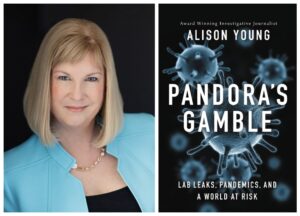
On Dec. 27, the CDC significantly shortened isolation and quarantine times for people who have tested positive for the SARS-CoV-2 virus or have been exposed to someone with the coronavirus.
CDC director Rochelle Walensky, M.D., M.P.H., said the decision to decrease isolation and quarantine periods was based on both the known science about the coronavirus’s transmission and the expectation that surging cases could cause societal disruptions.
“CDC’s updated recommendations for isolation and quarantine balance what we know about the spread of the virus and the protection provided by vaccination and booster doses,” she said. “These updates ensure people can safely continue their daily lives.”
However, the CDC’s decision was met with confusion and mixed reactions among infectious disease experts.
For example, Ashish Jha, M.D., M.P.H., dean of the Brown University School of Health wrote on Twitter that it is “a step in the right direction,” while Michael Mina, M.D., Ph.D., epidemiologist, raised concerns that a large number of people may still be contagious five days after testing positive and therefore shouldn’t be leaving isolation.
To help with your reporting, here are bullet points explaining the guidance:
- If you test positive for the virus, you should go into isolation for five days, down from ten days under the previous guidance. If you live with others, isolation means remaining in a separate room and wearing a mask if you must be around other people in the home. If you have no symptoms by day 5 or your symptoms are resolving (without fever for 24 hours), you can come out of isolation, but you should wear a mask for another five days when around others inside and outside the home. If you continue to have symptoms, you must remain in isolation until symptoms resolve.
- If you are exposed to someone who has tested positive for the virus and you are unvaccinated, you should quarantine in your home for five days and then wear a mask in public for another five days. If you cannot quarantine, the CDC said it is imperative to wear a “well-fitted mask” when in public for ten days after exposure to ensure that you don’t spread the virus. If you have received two doses of an mRNA vaccine (by BioNTech Pfizer or Moderna) and are six months after your 2nd dose or received a Johnson & Johnson vaccine and are two months after your dose, you should follow the same quarantine guidelines as those who are unvaccinated.
- If you are exposed to someone who has tested positive and are vaccinated and have received a booster shot, you do not have to quarantine, but should wear a mask when in public for ten days after exposure.
- “Best practice” includes you getting a SARS-CoV-2 test at day five after exposure and if you have symptoms after exposure, to get a test and quarantine until you know the test results.
The updated CDC guidance doesn’t require people to receive a negative COVID test to confirm they are no longer contagious before coming out of isolation on day five because “people are most infectious in the one to two days before symptoms develop and the two to three days after,” CDC’s Walensky said at a White House COVID-19 response team media briefing on Dec. 29. “After five days, the risk of ongoing transmission substantially decreases.”
Further, she said that the CDC isn’t requiring PCR tests to come out of isolation because the sensitivity of the PCR tests can result in someone remaining positive for weeks after symptoms resolve.
She added that the CDC decided not to require a negative rapid antigen test at day five because: “We do not know how well those antigen tests perform at day five in detecting transmissibility. And it is for that reason that we would say, even if you had a negative test, we would want you to mask, and even if you had a positive test, we would also want you to mask. And therefore, given that these antigen tests are not authorized for use in this way, we did not recommend them at that time.”
For reporters who are looking for experts to help with understanding the guidance, check out AHCJ’s COVID-19 reporter’s essential toolkit.








